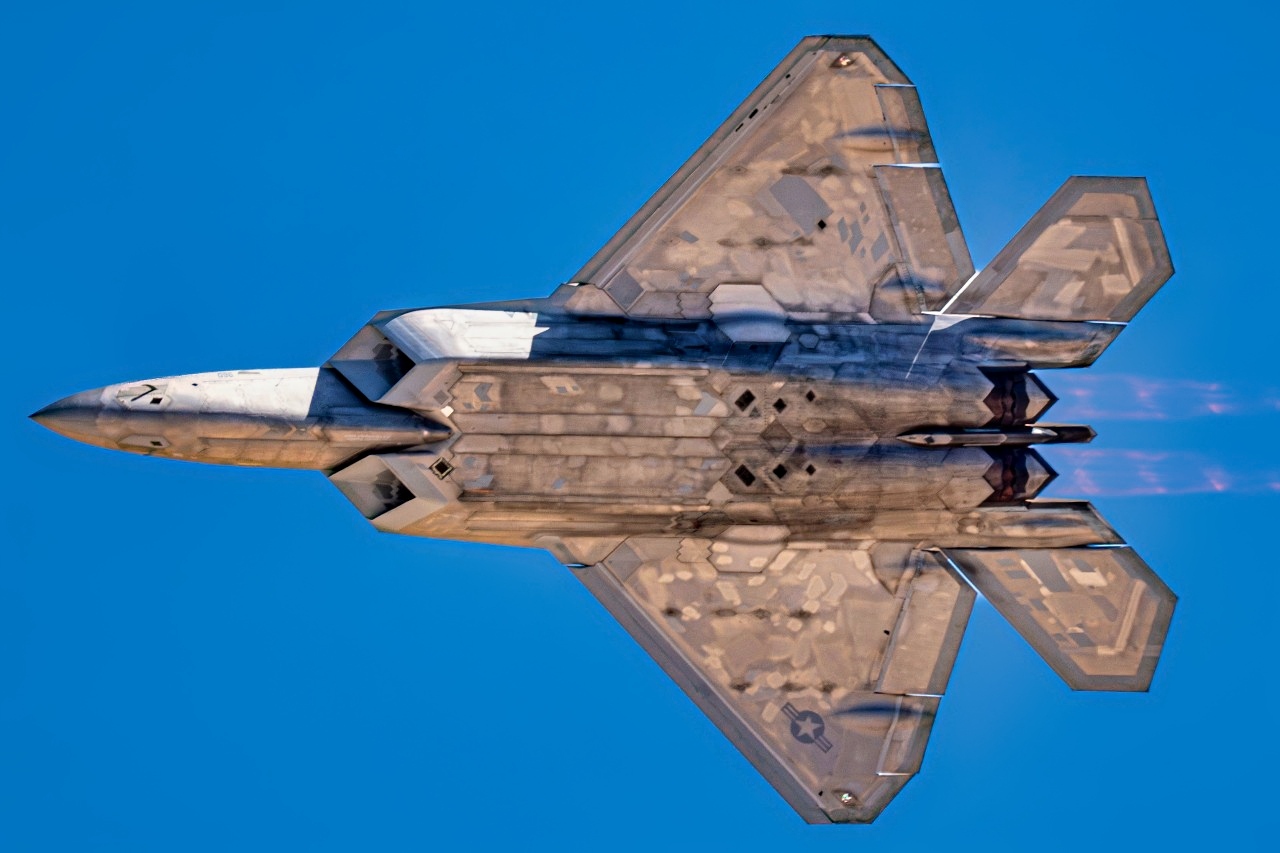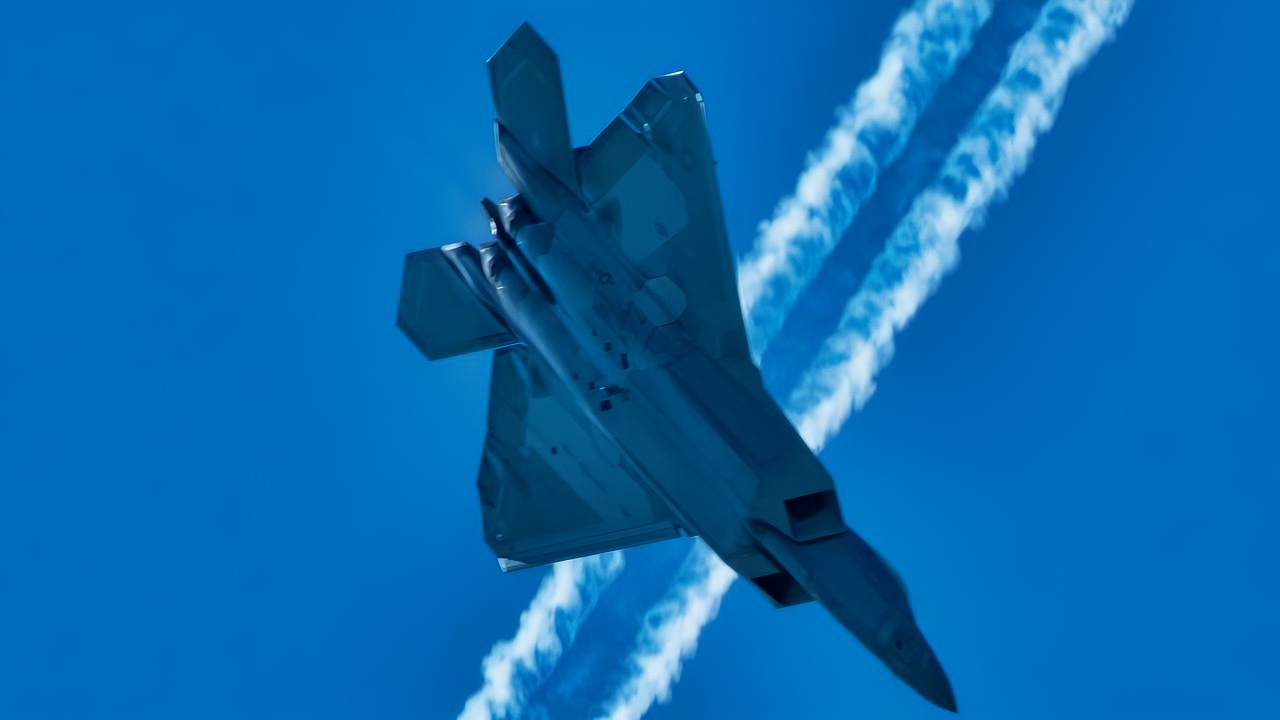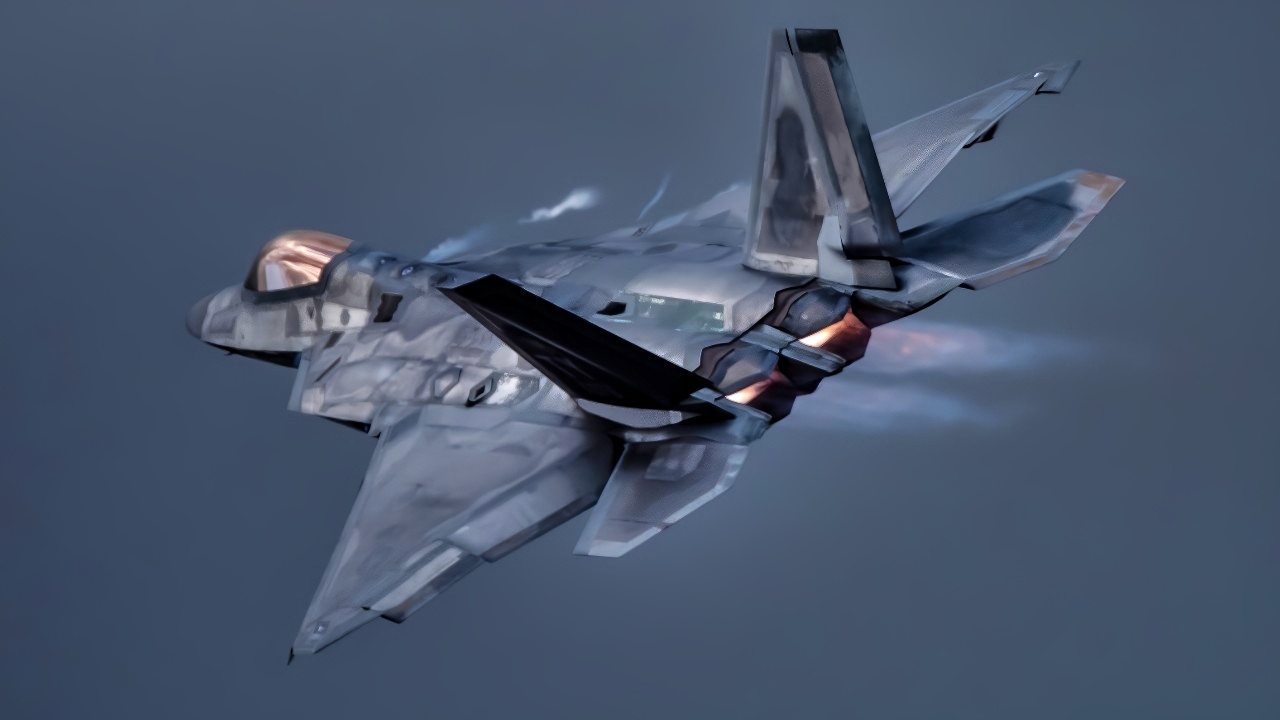Key Points and Summary – The 2009 decision to prematurely halt F-22 Raptor production at just 187 aircraft was a “catastrophic, shortsighted” blunder that now haunts the U.S. Air Force.
-Driven by the fighter’s high cost and a myopic focus on the counter-insurgency wars in Iraq and Afghanistan, the move ignored future threats from peer competitors.
-Today, as China and Russia field their own advanced fighters, the U.S. is left with a “ghost fleet” of its most dominant air superiority fighter—a force too small to be strategically relevant in a great-power conflict.
Why the Air Force Has So Few F-22 Raptor Stealth Fighters
In the long and storied history of American airpower, no single aircraft has ever achieved the level of sheer, unadulterated dominance of the F-22 Raptor.
It is a machine that represents the absolute pinnacle of tactical aviation, a perfect fusion of stealth, speed, and agility that remains unmatched by any other fighter on Earth.
It was designed for a single, existential purpose: to guarantee that in any conflict, anywhere in the world, the skies would belong to the United States Air Force.
The F-22 Will Never Reach Its Full Potential
Yet today, this unparalleled weapon exists as a ghost fleet, a boutique force so small that it borders on strategic irrelevance, at least, according to some experts I have spoken to over the years.
The decision in 2009 by then-Secretary of Defense Robert Gates to prematurely terminate the F-22 production line at just 185 or so aircraft—a fraction of the 750 initially planned—is now being viewed as one of the most catastrophic, shortsighted, and self-inflicted wounds in modern military history.
That was just a bad call. Period. End of story.
This was not a decision born of strategic foresight. It was a blunder of epic proportions, a choice made by looking in the rearview mirror at the wars of the present, rather than through the windshield at the threats of the future.

F-22 Raptor at USAF Museum. Image Credit: National Security Journal.
Now, as the era of great-power competition returns with a vengeance, we are left to confront the terrifying consequences of this decade-old mistake.
And we have no way of fixing it.
The Unrivaled Apex Predator
To understand the gravity of the production cut, you must first appreciate what the F-22 truly is.
It is not just another fighter jet; it is a declaration of dominance made manifest in titanium and composite materials. It is the only operational fighter in the world that successfully blends true all-aspect stealth with the aerodynamic performance to outclass any adversary in a dogfight.
Its two powerful Pratt & Whitney F119 engines allow it to achieve “supercruise”—the ability to fly at sustained supersonic speeds without the use of fuel-guzzling afterburners. This gives it an energy advantage in combat that is simply unmatched. Combined with its thrust-vectoring nozzles, which allow the pilot to perform breathtaking maneuvers that defy the laws of physics, the Raptor can out-turn, out-climb, and outrun any potential foe.
This kinematic superiority, paired with its incredibly low radar cross-section, makes the F-22 an actual ghost. It is a machine designed to hunt and kill its enemies before they are even aware that they are being stalked.
It was built to be the silver bullet that could kick down the door of the most heavily defended airspace on the planet, sweeping the skies of advanced Russian and Chinese fighters to clear the way for the rest of the force. It was, and is, the ultimate apex predator.
A Vision Clouded by Dust and Dollars
So why would the United States voluntarily disarm itself by capping production of such a dominant weapon?
The 2009 decision was the result of a perfect storm of flawed assumptions, a myopic focus on the present, and a dangerous illusion about the future.
The first and most powerful driver was cost. The F-22 was, without question, an astronomically expensive aircraft. In an era of tightening defense budgets, Secretary Gates argued forcefully that it was a Cold War luxury we could no longer afford. The sticker shock of a multi-hundred-million-dollar fighter was a powerful argument in a nation weary of massive defense spending.

A U.S. Air Force F-22 Raptor performs an aerial demonstration during Aviation Nation 2025 at Nellis Air Force Base, Nevada, April 5, 2025. Aviation Nation is an airshow held at Nellis Air Force Base, showcasing the pride, precision and capabilities of the U.S. Air Force through aerial demonstrations and static displays. The F-22 Raptor performed there to highlight its unmatched agility and air dominance as part of the Air Force’s efforts to inspire, recruit and connect with the public. (U.S. Air Force photo by Staff Sgt. Lauren Cobin)
Second, the decision was clouded by the dust of the War on Terror. In 2009, America’s primary adversaries were not peer-state air forces, but insurgents with AK-47s and IEDs in the deserts of Iraq and the mountains of Afghanistan. From that perspective, the F-22 seemed like an exquisite irrelevance. Why spend billions on an air superiority fighter when the enemy has no air force? The strategic focus, and the funding that came with it, shifted to drones, armored vehicles, and the tools of counter-insurgency.
Finally, the decision was underpinned by the dangerous illusion of the “End of History.” The prevailing wisdom in Washington was that the era of great-power competition was over. Russia was seen as a hollowed-out petrostate, and China’s military rise was not yet perceived as a direct, peer-level threat. The thinking was that the F-35—a more affordable, multi-role “jack-of-all-trades”—would be sufficient to handle any future threats.
We were, in essence, fighting the last war, convinced that the future would look just like the present.
F-22 Slashing: The Price of a Decade-Old Mistake
Today, the folly of that decision is laid bare. Great-power competition is back with a vengeance. China is mass-producing its J-20 stealth fighter and Russia continues to field advanced variants of its Su-35, while working on its own Su-57.

Su-57 Felon Fighter Russian Ministry of Defense Photo
The threats the F-22 was designed to kill are now a reality. And we have a fleet of just 183 or so Raptors—of which only around 120 approximately are combat-coded at any given time—to face them.
Why a China Scenario Could Test the F-22 Raptor
Let’s wargame it out. A crisis erupts over Taiwan. The first 24 hours of that conflict will be a brutal, violent struggle for control of the air. China will throw hundreds of fighters into the sky to overwhelm our forces and establish air superiority, allowing them to attack American and Taiwanese naval assets with impunity. To counter this, the U.S. will rely on its small, precious fleet of F-22s.
These Raptors will be stretched dangerously thin, trying to cover a vast theater of operations against a numerically superior foe. They will be outnumbered, their pilots will be pushed to the limits of human endurance, and every single combat loss will be a catastrophic blow to our overall capability.
The F-35, a brilliant strike fighter and sensor node, will be forced into a defensive, air-to-air role for which it was not optimized, simply because we do not have enough dedicated air superiority fighters to do the job.
We risk losing the air war in the opening days of a conflict —a failure from which we might never recover —due to a budget decision made over a decade ago.

U.S. Air Force Maj. Josh Gunderson, F-22 Demonstration Team pilot, soars through the sky during a demonstration practice Feb. 27, 2020, at Davis-Monthan Air Force Base, Ariz. The Heritage Flight Training Course is a training course for all single-ship aerial demonstration teams prior to the upcoming summer air show season. (U.S. Air Force Photo by Captain Kip Sumner)
A Problem That Can’t Be Fixed
The production line for the F-22 is no longer in operation. The specialized tooling has likely been dismantled, the highly skilled workforce has moved on, and the complex supply chain no longer exists.
A 2017 Air Force report estimated it would cost a staggering $50 billion to procure just 194 more aircraft.
The decision to kill the Raptor was, for all practical purposes, irreversible. It was a short-term budget solution that created a long-term, almost unsolvable strategic crisis.

An F-22 Raptor soars over the Pacific Sea Test Range on December 19, 2024. The aircraft is assigned to the 411th Flight Test Squadron, Air Dominance Combined Test Force, at Edwards Air Force Base, CA. (Courtesy photo)
We have the best fighter in the world, but we don’t have enough of them. And that is a terrifying, self-inflicted wound.
About the Author: Harry J. Kazianis
Harry J. Kazianis (@Grecianformula) is Editor-In-Chief and President of National Security Journal. He was the former Senior Director of National Security Affairs at the Center for the National Interest (CFTNI), a foreign policy think tank founded by Richard Nixon based in Washington, DC. Harry has over a decade of experience in think tanks and national security publishing. His ideas have been published in the NY Times, The Washington Post, The Wall Street Journal, CNN, and many other outlets worldwide. He has held positions at CSIS, the Heritage Foundation, the University of Nottingham, and several other institutions related to national security research and studies. He is the former Executive Editor of the National Interest and the Diplomat. He holds a Master’s degree focusing on international affairs from Harvard University.
More Military
J-36 vs. F-47: Which 6th Generation ‘NGAD’ Fighter Will Be ‘First’?
The F-22 Raptor Is Beyond Stealth
Canada’s Slow-Motion Tank Crisis Is Just Getting Started
Montana-Class: The 70,000-ton Battleship the Navy Almost Built











Matt
August 28, 2025 at 9:42 pm
We could definitely restart production. It’s very possible and the whole notion that it’s not is defeatism in action.
It could be done significantly cheaper if using the Defense Production Act and bypassing some of the stupidity of the contracting system (why was the supply chain so complex in the first place? It never had to be… It was a political choice. Longer supply chains are more expensive and more delayed but they help hit the “small business” quotas etc. I think restarting production is certainly possible and it’s doable in far less time than you indicated. It requires undoing some of the handcuffs that America has built regarding defense contracting, but it can be done, and it can be done faster and cheaper than estimated. Government causes most of its own problems in procurement. It doesn’t have to. If this administration has shown us anything, most of the rules don’t really apply and they don’t have to be followed…)
Funding? Congress just allocated 50 billion to ICE for facilities. They raised the defense budget again.
If you think it’s so critical, advocate for it. This spendthrift Congress and administration wants to spend on war already. Might as well build the best fighter ever made with the money. They’ll waste it some other way if you don’t.
Raptor1
August 30, 2025 at 12:49 pm
A news flash for the “journalist” that wrote this: Tbe F-22 was sacfificed for the f-35… and not because the 2 aircraft are the same because they are NOT… And thats exactly the point. Because unlike the F-35, the Raptor actually WAS a cresible in-production aircraft. Also unlike the F-35, tbe F-22 was an aircraft whise costs were falling DRAMATICALLY… Further, the f-22 was not intended to be mass-produced and sold around the world, ao it was never going to be aold to every tom dick and harry that could line corporate and congressional pockets.
The sacrifice of the f-22 for the f-35 was a calculated measure to ensure that a weapon that was already was far superior would never reach ita full potential until AFTER the money-maker rook all of its funding and all of its upgrade potentials and flushed them away.
And now, twenty years on, that same fanclub atanda whole-heartedly behind INCREASWD prodution of a fighter whose costs have gone up, whose availability has gone down, and which now requirws MORE money just to provide capabilities tgat have been promised for ywars but now are “hopefully” gunna be delivered in 5-10 years. Thia same fanclub that argued for this stupidity now insists that a 5,5 gen f-35 will bring value theyve nit deluvered jn 30 years… and tgat the f-35s replacement ia the f-47.
The stupidity and greed displayed by people at the expense of an inassailable lead is simply staggering.
BOTH aircraft needed to remain in production. The F-35 is, ironically, the very reason WHY.